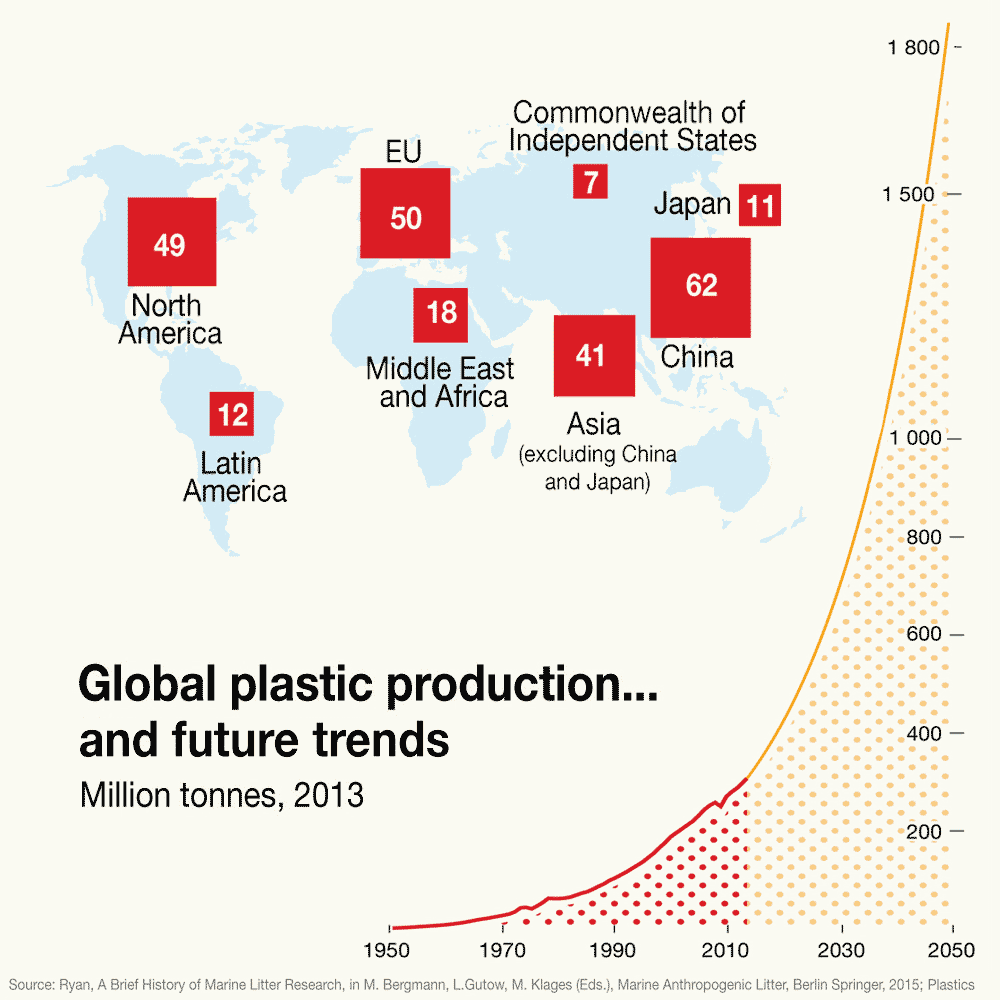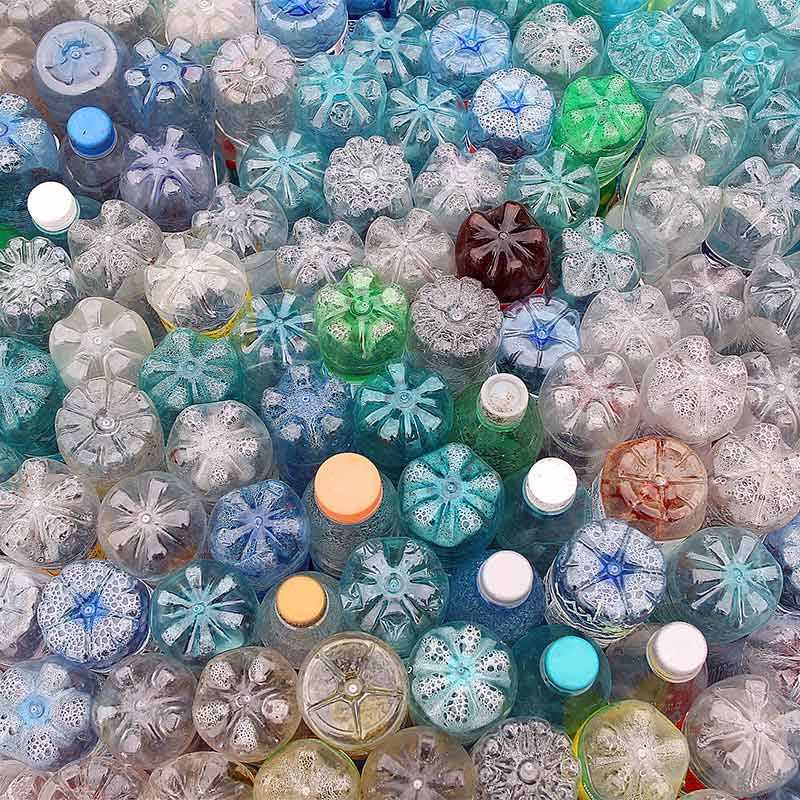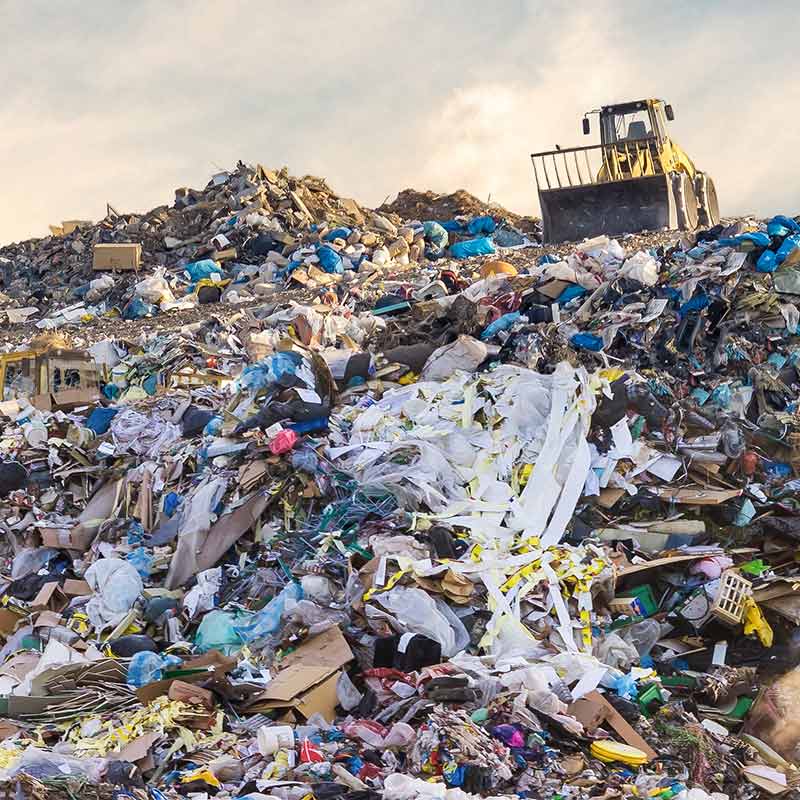Packaging waste 101: the problem
About this step
Gaining an understanding of the issues surrounding packaging waste is the first step in mitigating it.
What is the problem
Plastics are a product of human innovation as they are lightweight, durable, decay resistant, inexpensive and moldable. Unfortunately, this innovation comes at a price.
Plastic packaging is extremely wasteful and impacts earth’s ecosystems, on which we depend. Due to poor product design and lack of political infrastructure, the majority of plastic waste is sent to landfills or disposed of into the environment. 9.2 billion tons of plastic have been produced, of which only 9 percent has been recycled properly.
Because plastic isn’t biodegradable, every piece of plastic ever made is still on this planet. Whether it breaks down into microplastics or not, plastic that is either dumped or washed into the oceans are consumed by marine animals.
Corporations are supplying the rapidly growing populations with single-use plastic. The graph to the right shows the projected four-fold increase in plastic production tonnage by 2050.
Plastic packaging is one of the greatest generators to plastic pollution, for its shortest life-span. Here is a snapshot of plastic waste generation by sector, in 2015.

The business costs
Labor Costs
Handling waste on site costs time, energy, and manpower. This includes time spent cleaning, collecting, transporting and removing waste from your facility. Reducing total waste produced by using biodegradable alternatives or circling the material back into the system for reuse would save labor costs.
Disposal Costs
Dumping waste at landfills is costly. Certain city waste management systems’ waste removal costs depend on the size and weight of the load. Reducing the amount of waste you produce thus decreases waste disposal costs.
Complying with Legislation
Be mindful of your country’s federal regulations in regards to plastic. There is currently a increase in plastic bans around the world, which may impact your business.
Supply Chain
Improving the life-cycle of your products allows for greater transparency throughout the supply chain, increasing efficiency, reducing costs and opening up new opportunities for improvement.
Stakeholder Relationships
Improving your environmental performance can help improve your business’ image and reputation among stakeholders such as customers, the public, regulatory
New Opportunities
Consumers are becoming more aware of the environmental impacts of the products they consume. Complying with the growing desire for environmentally-friendly products will further develop your customer-base as well as make you a leader in this space.

What are the environmental costs?
Reducing overall plastic packaging is imperative to mitigating further environmental damage for numerous reasons:
Reduce waste
Landfill space is limited. As of now, 91 percent of packaging waste is sent to the landfills and/or in the environment. Reducing single-use plastics and increasing the usage of biodegradable materials would lighten the load for waste-management systems around the world and increase efficiency for the necessary waste needed for processing.
Conserve resources
Plastics are made out of natural resources, like crude oil, natural gas and coal. Extracting natural resources for material needs for an ever-growing population serves long-lasting effects on the environment (deforestation, fracking, oil and gas leaking, etc.) Reducing the amount of plastic packaging produced would inherently decrease the demand for such resources, leaving the planet and the ecosystems, on which we all depend, stable.
Conserve energy
Creating new materials from existing materials naturally uses less energy than using raw materials. According to the Environmental Protection Agency (EPA), recycling one pound of polyethylene (the most commonly used material in plastic water bottles) conserves up to 12,000 BTUs (British thermal units) of heat energy. Recycling processes use up to two-thirds less energy than traditional manufacturing, significantly reducing the strain on the traditional power grid, which relies heavily on burning fossil fuels.
Reduce GHG emissions
Plastic manufacturing is energy intensive and emits greenhouse gases, such as carbon dioxide, which to a certain degree, are damaging to the environment and atmosphere and contribute heavily to global warming. EPA estimates that every family can reduce their carbon dioxide emissions by up to 340 pounds annually, simply by recycling their plastic waste.
Decrease Pollution
Due to poor waste management systems around the world, the majority of plastic packaging that is sent to landfills ends up in our natural environments. 8 million tons of plastic is dumped in the ocean every year. Plastic pollution threatens wildlife, alters ecosystems and poses risks to human health. Reducing the production of plastic packaging would decrease the chance of such damage.
Moreover, plastic waste that is sent to landfills is ultimately incinerated to make room for more incoming waste. Burning plastic emits toxic pollutants and irritants into the air we breathe. Reducing the amount of plastic waste sent to landfills can dramatically increase air quality around the world.
Continue with: Packaging waste 101: solutions
